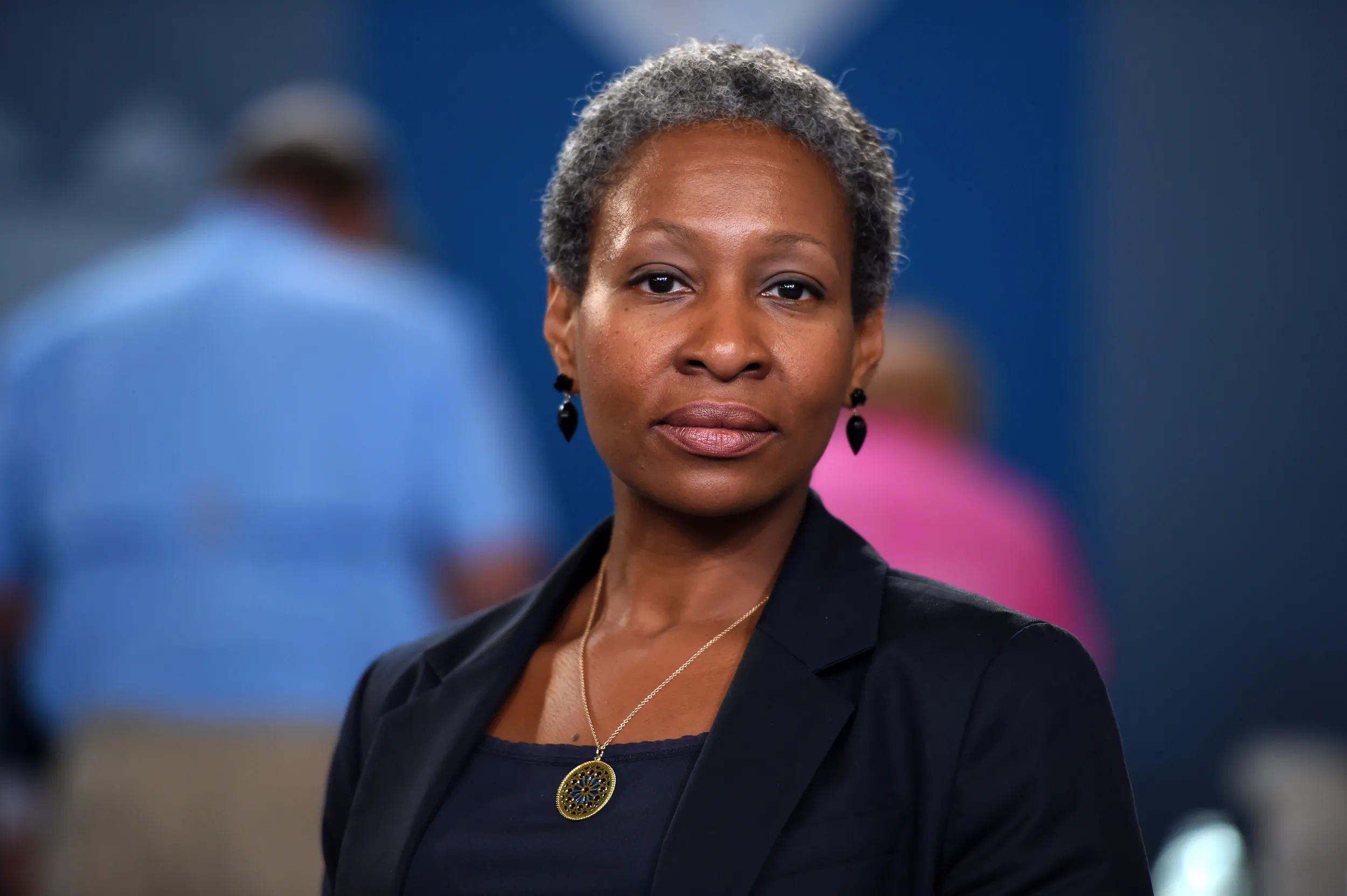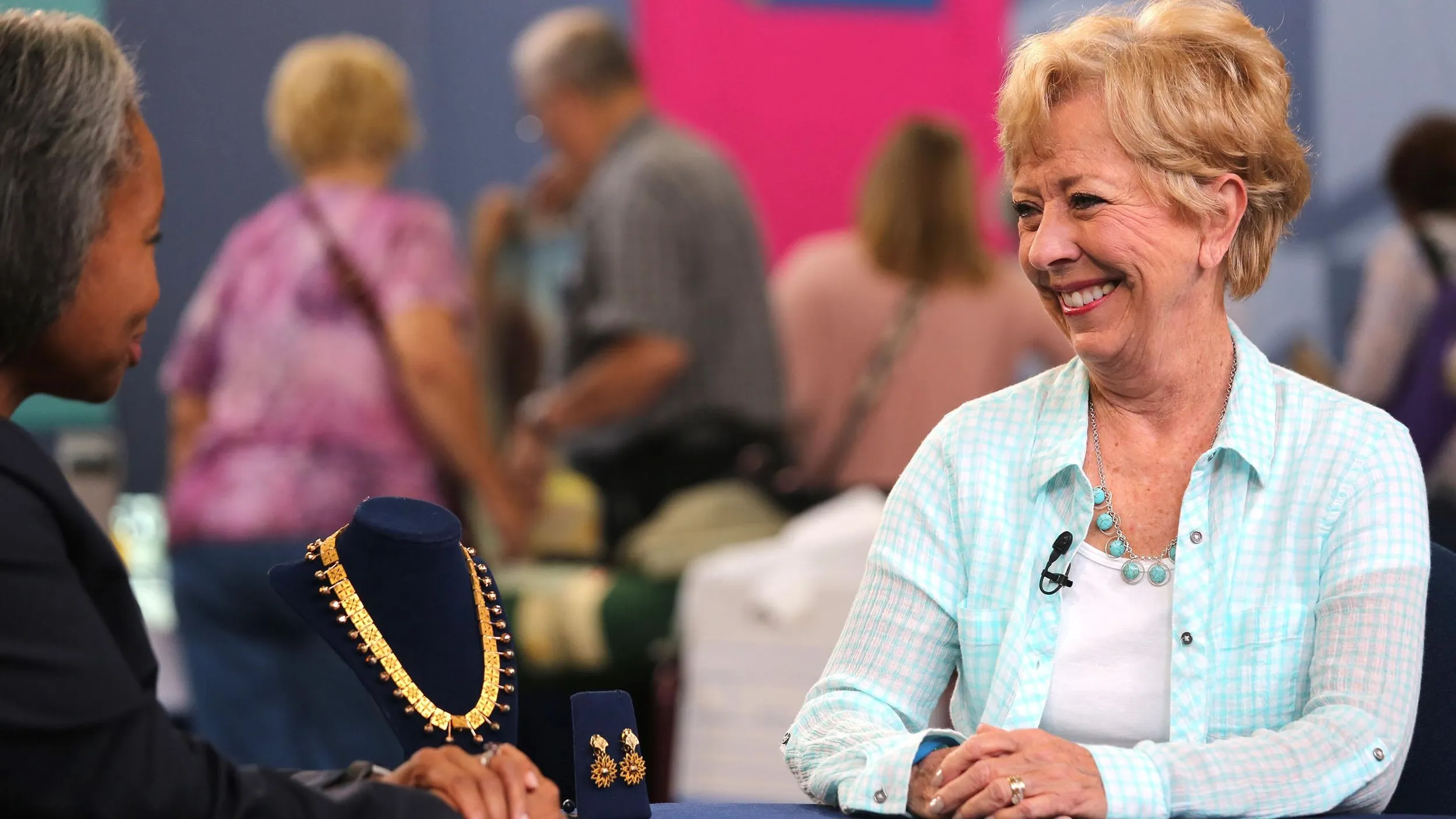GUEST: I'm not really quite sure what I brought in. My mother went to visit her sister, Aloise, and Aloise was Mrs. William F. Buckley, Sr. So William Buckley, the statesman, whatever, this was his mother's jewelry, originally. And they traveled around quite a lot, and so I don't know where she picked it up, but she didn't want it anymore, so my mother took it. There are five girls in my family, and so she brought it back, thought one of us would like it, and the others were, like, "Ooh, no, it's not, no." I was, like, "Oh, I kind of like that." It's a little on the gaudy side, but I liked it. So I took it, and I hope they'll be sorry that they didn't now.
APPRAISER: Well, they probably will be after this. Have you ever had the piece appraised?
GUEST: I did. Maybe 20 years ago. The jeweler said it was acid-etched gold and he thought it was maybe $3,000 or $4,000.
APPRAISER: Okay. Let me tell you what he means by that. If you look at the patina on each of these little square plaques, they use acid to get that kind of frosting on the plaques, so that's what, when we refer as "acid-etched," that's what we're talking about in the jewelry business. I believe this is a Victorian necklace and earrings, and I think it's probably from about 1870.
GUEST: Really!
APPRAISER: This necklace had a pendant on it, and if you flip this square up you can see the pendant loop. So you could wear it just as it is or add another little element to it. Your chain, it's an old woven chain, so that's original to the piece, as well. And then I love these little balls. But something I find fascinating about this piece is, usually they are broken apart. In a family situation like yours, someone goes, "Well, why don't we make earrings out of these?" Or make a pair of earrings and a pendant for someone, because you certainly have enough plaques to do that.
GUEST: Right.
APPRAISER: So it's very hard to find these pieces intact. I noticed there are no markings on the necklace, so it could be American, but just the same, it could be from Europe. You also have a pair of earrings. Not necessarily that they went with this style, but again, you have a bit of wire work here, you see that around the starburst?
GUEST: Yeah.
APPRAISER: And the starburst is a very common element in Victorian jewelry. And then, they're, again, repeating these balls. It's a beautiful ten-karat Victorian necklace and earrings. And I would say if you went to buy this in a retail store today, you would be looking between $6,000 and $8,000.
GUEST: Oh, wow! Nice! Very nice!
APPRAISER: Do you wear it?
GUEST: I do wear it, I do wear it.
APPRAISER: I think it's gorgeous.
GUEST: Well, thank you so much.
APPRAISER: Thank you for bringing it.
GUEST: I'm delighted to know that.












